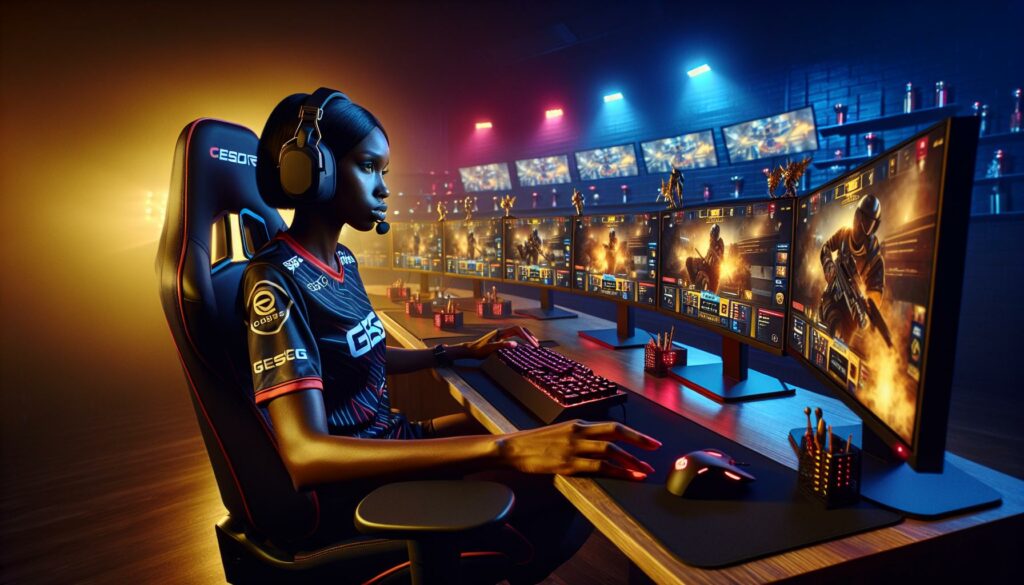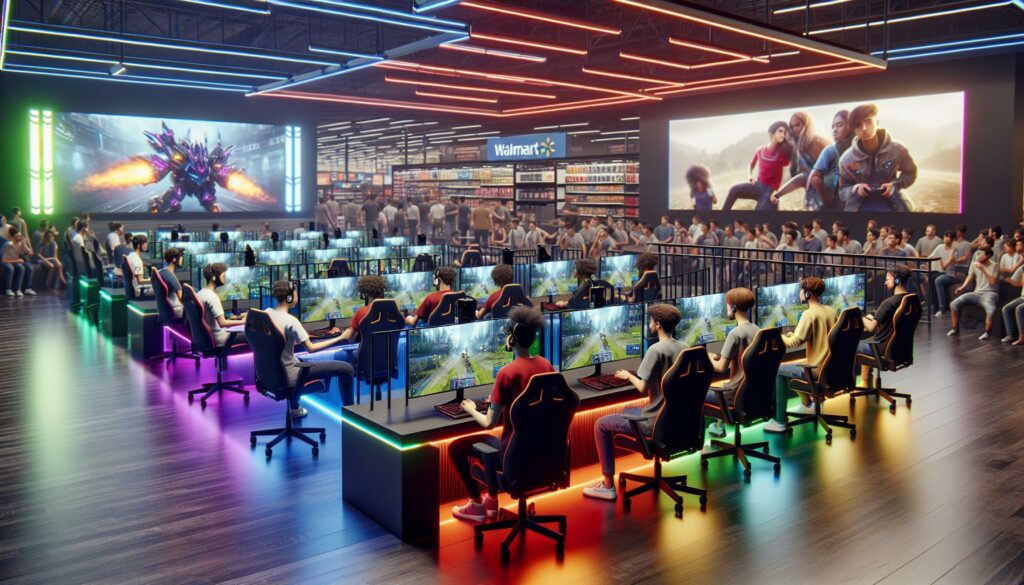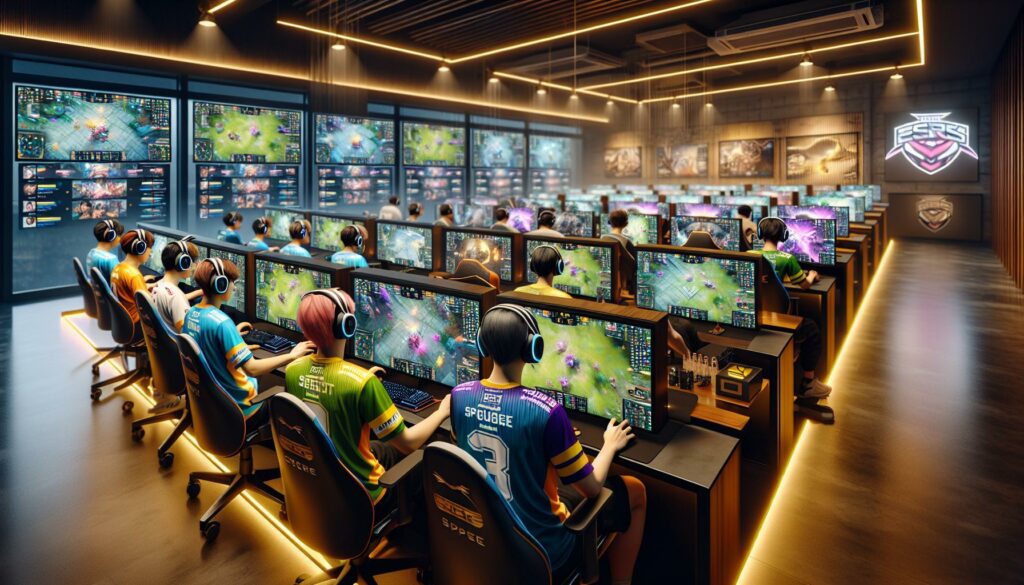I’ve watched the esports industry explode over the past decade with sold-out arenas massive prize pools and millions of viewers worldwide. Yet the debate rages on: are esports really sports? As a long-time gamer and sports enthusiast I find myself pondering this question often. The traditional definition of sports emphasizes physical activity and competition but today’s digital age has blurred these lines. Professional gamers train for hours develop strategic thinking and demonstrate lightning-fast reflexes – skills that mirror those of traditional athletes. They compete in structured leagues face intense pressure and represent teams just like their counterparts in conventional sports. This ongoing discussion isn’t just about semantics. It impacts everything from Olympic recognition to college scholarships and the legitimacy of professional gaming careers. Let’s dive deep into what makes a sport a sport and whether esports truly deserve this classification.
- Esports combines physical and mental skills, including hand-eye coordination, strategic thinking, and quick decision-making abilities requiring 300-400 actions per minute
- Professional gamers undergo rigorous training schedules of 12-14 hours daily, including team practice, individual skill development, and physical conditioning
- The esports industry features structured leagues, massive prize pools up to $40 million, and draws hundreds of millions of viewers globally
- The Olympics and traditional sports organizations are increasingly recognizing esports, with inclusion in events like the Asian Games and Olympic Virtual Series
- While differences exist in physical demands and venue requirements, esports shares many core elements with traditional sports including organized competition, professional infrastructure, and commercial frameworks
Are Esports Real Sports
Esports represent organized competitive video gaming where professional players compete in specific games for prizes money ranging from $10,000 to $40 million. The competitive gaming landscape encompasses multiple genres including multiplayer online battle arenas (MOBAs), first-person shooters (FPS) real-time strategy games (RTS).
Key Elements of Professional Gaming
Professional gaming combines strategic decision-making technical execution mental resilience. Professional players demonstrate mastery in:
- Hand-eye coordination with 300-400 actions per minute in games like StarCraft
- Strategic analysis through complex map awareness resource management
- Team communication via dedicated voice channels Discord servers
- Mental focus during 8-12 hour practice sessions scrimmages
- Technical proficiency with specialized gaming equipment peripherals
- Professional leagues (League of Legends Championship Series Overwatch League)
- Regional qualifiers feeding into international tournaments
- Seasonal formats with regular seasons playoffs championships
- Structured team organizations featuring coaches analysts support staff
- Broadcasting platforms (Twitch YouTube) reaching 495 million viewers globally
| Competition Level | Average Prize Pool | Viewership (Millions) |
|---|---|---|
| Tier 1 Events | $2-40 million | 100+ |
| Regional Leagues | $100k-500k | 50-100 |
| Amateur Circuits | $5k-50k | 1-10 |
Physical and Mental Demands of Esports
Professional esports athletes endure rigorous physical demands and intense mental challenges that parallel traditional sports. My analysis reveals specific requirements across training schedules cognitive performance metrics that demonstrate the demanding nature of competitive gaming.
Training Requirements and Practice Schedules
Professional esports athletes maintain strict 12-14 hour daily training schedules, including:
- Physical conditioning: 2 hours of wrist exercises hand stretches eye movement training
- Team practice: 6-8 hours of scrimmages strategy sessions replay analysis
- Individual skill training: 3-4 hours of mechanical practice aim training reaction drills
- Health management: Regular eye examinations physical therapy sessions hand specialist consultations
Practice metrics from top esports teams show:
| Activity | Hours per Week | Actions per Minute |
|---|---|---|
| Team Practice | 40-50 | 300-400 |
| Solo Training | 20-30 | 200-300 |
| Physical Exercise | 8-10 | N/A |
Cognitive Skills and Strategic Thinking
Professional esports competition demands multiple cognitive abilities:
- Information processing: Processing 400+ actions per minute during intense gameplay
- Decision making: Analyzing 50+ variables in 0.25 seconds for tactical choices
- Spatial awareness: Tracking 10+ moving elements simultaneously on screen
- Memory recall: Memorizing 100+ ability combinations item builds map layouts
| Skill Type | Measurement | Pro Player Average |
|---|---|---|
| Reaction Time | Milliseconds | 180-200 |
| APM | Actions per Minute | 300-400 |
| Decision Points | Per Game | 850-1000 |
| Focus Duration | Hours | 4-6 |
Comparing Traditional Sports and Esports
Traditional sports and esports share fundamental competitive elements while maintaining distinct characteristics in their execution and requirements. The comparison reveals both striking similarities and notable differences that shape the ongoing debate about esports’ classification as real sports.
Shared Elements of Competition
Competitive structures in both domains exhibit parallel frameworks:
- Organized leagues operate with defined seasons, playoffs and championships
- Team dynamics require coordinated strategy, communication and role specialization
- Professional players dedicate 8-12 hours daily to deliberate practice and skill development
- Mental resilience determines performance under high-pressure situations
- Broadcast productions feature commentators, analysts and production teams
- Sponsorships, merchandise and ticket sales generate revenue streams
- Talent development systems include amateur leagues, academies and scouting
- Physical Activity: Traditional sports demand full-body movement while esports focus on fine motor skills and hand-eye coordination
- Venue Requirements: Traditional sports need specialized fields or courts while esports operate in digital arenas
- Equipment Standardization: Physical sports use standardized equipment while esports adapt to hardware updates and patches
- Competition Format: Traditional sports follow fixed rules while esports evolve with game updates and meta changes
- Accessibility: Digital competitions enable remote participation while traditional sports require physical presence
- Injury Types: Traditional athletes face physical injuries while esports players manage repetitive stress and eye strain
- Age Demographics: Professional esports careers peak at 18-25 years while traditional sports vary by discipline
| Comparison Metric | Traditional Sports | Esports |
|---|---|---|
| Average Career Length | 10-15 years | 5-8 years |
| Peak Performance Age | 25-30 years | 18-25 years |
| Daily Practice Hours | 4-6 hours | 8-12 hours |
| Global Active Players | 250M-500M | 500M-1B |
| Annual Prize Money | $100M-$500M | $250M-$1B |
The Growing Recognition of Esports
Esports recognition has expanded significantly through prestigious tournaments, mainstream media coverage, and institutional acknowledgment. The industry’s legitimacy continues to grow with increased investment from traditional sports organizations and broadcasting networks.
Major Tournaments and Prize Pools
The International Dota 2 Championship leads competitive gaming with a $40 million prize pool in 2021, surpassing many traditional sports tournaments. Notable events include:
- League of Legends World Championship draws 73 million peak concurrent viewers
- ESL Pro League features 24 teams competing for $850,000 per season
- Fortnite World Cup offers $30 million across solo and duo competitions
- PUBG Global Championship maintains a consistent $7 million prize pool
Major brands like Intel, Mercedes-Benz, and Red Bull invest $356 million annually in tournament sponsorships, establishing esports in mainstream entertainment.
Olympic Committee Considerations
The International Olympic Committee (IOC) has taken concrete steps toward incorporating esports into the Olympic framework. Key developments include:
- Singapore 2021 Olympic Virtual Series featuring five virtual sports
- Formation of the Olympic Esports Commission in 2021
- Integration of esports demonstration events at 2022 Commonwealth Games
- Creation of standardized competitive guidelines for Olympic-recognized games
The Olympic Council of Asia has already included esports in the 2022 Asian Games, awarding medals in eight game titles. This integration marks significant progress in establishing esports’ legitimacy within traditional sporting frameworks.
| Tournament Type | Prize Pool | Viewership | Participating Countries |
|---|---|---|---|
| The International | $40M | 52.8M | 45 |
| LoL Worlds | $2.2M | 73M | 35 |
| Asian Games Esports | $5M | 23M | 28 |
| Olympic Virtual Series | $500K | 15.6M | 104 |
Professional Infrastructure in Esports
Professional esports operates through a sophisticated infrastructure that mirrors traditional sports organizations. This established framework supports player development, competition management, and commercial growth.
Teams, Leagues, and Sponsorships
Major esports organizations like Team SoloMid, Cloud9, and FaZe Clan operate multiple competitive rosters across different game titles. These teams maintain training facilities, coaching staff, medical personnel, and support crews similar to traditional sports franchises. Franchised leagues such as the League of Legends Championship Series require teams to pay entry fees of $10-13 million, creating stable competitive environments with revenue sharing models.
| Entity Type | Annual Revenue | Active Teams | Major Sponsors |
|---|---|---|---|
| Tier 1 Teams | $25-45M | 15-20 | BMW, Intel, Red Bull |
| Regional Leagues | $100-150M | 8-12 | Mastercard, State Farm |
| Global Circuits | $200-300M | 20-24 | Mercedes-Benz, Louis Vuitton |
Broadcasting and Media Coverage
Esports broadcasts reach audiences through specialized platforms like Twitch and YouTube Gaming. Professional productions feature commentators, analysts, and state-of-the-art graphics packages for match coverage. Major networks including ESPN, TBS, and Sky Sports incorporate esports content into their programming schedules.
| Platform | Monthly Active Users | Peak Concurrent Viewers | Hours Watched |
|---|---|---|---|
| Twitch | 140M | 6.5M | 1.8B |
| YouTube Gaming | 100M | 3.1M | 1.2B |
| Traditional TV | 50M | 2.2M | 500M |
The debate around esports’ classification as real sports isn’t just about semantics – it’s about recognizing a rapidly evolving form of competition that’s reshaping entertainment and athletic achievement. From my perspective as both a gamer and sports enthusiast I believe the evidence speaks for itself.
With professional leagues organized competitions structured training and millions of viewers esports has earned its place alongside traditional sports. While the physical demands may differ the mental prowess strategic thinking and competitive spirit mirror what we see in conventional athletics.
The future of sports is expanding and I’m confident that esports will continue to break barriers and redefine what we consider legitimate athletic competition. The question isn’t whether esports are real sports – it’s how they’ll continue to evolve and enhance the world of competitive entertainment.



